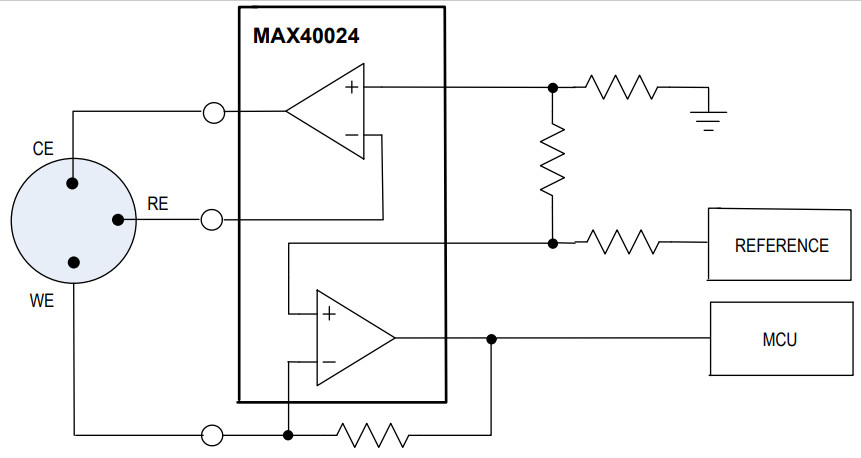
MAX40023 and MAX40024 are single and dual amplifiers that will run from 1.6 to 3.6V, typically for 17μA per channel. A shut-down pin typically takes this to 55nA.
Both inputs and outputs swing rail-to-rail and, commensurate with such low power consumption, gain bandwidth product is 80kHz.
Internal EMI noise filtering is included and noise is as low as 32nV/√Hz.
Input bias current is <1pA at room temperature – they are specified over -40 to +125°C.
Package options include a single in a 6 bump wafer-level package (0.4mm bump pitch) or 6-pin SOT23, or a dual in a 9 bump wafer-level package or 10pin TDFN.
They are designed for use with sensors in wearable medical and industrial applications.
blending high speed, precision and low noise
MAX40110 and MAX40111 also have rail-to-rail inputs and outputs, but this time gain bandwidth product is 15MHz, while quiescent consumption is typically 750μA from the 1.7 to 5.5V supply. Typical input noise is 12.7nV/√Hz (10kHz).
The input stage is not p-channel and n-channel differential pairs in parallel, but a single p-channel pair charge-pumped 1V above the positive rail.
“Unlike traditional rail-to-rail input structures, input crossover distortion is absent due to an optimized input stage with an ultra-quiet charge pump,” said Maxim. “The input offset is as low as 30μV due to the auto-calibration performed on power-up.”
Auto-calibration takes 1ms maximum and reduces maximum input offset to 140μV (25ºC, or 600μV across the -40 to +125°C operating range) – the amplifiers are relations of MAX44259, 60, 61 and 63, and MAX44290, with speeded power up.
To quicken return to operation when leaving shut-down (it takes 30µs) auto-calibration is not re-run, but power-up trim settings are remembered.
Inputs and outputs are high-impedance when the amplifiers are shut down – this also allows outputs to be multiplexed.
Once again, EMI rejection is built-in and input bias current is <1pA.
Use is foreseen filtering and amplifying signals in portable and industrial equipment – the rail-to-rail outputs
low noise suites them for use driving 12 to 14bit SAR ADC.
MAX40110 comes in a thin 6-μDFN package, while MAX40111 is in a 0.4mm pitch 6 bump wafer-level-package.
Diagram: MAX40024 with a three-terminal ethanol sensor



![W88 [Rủi Ro Khi Chơi Nổ Hũ: Lưu Ý Quan Trọng Nhất Cho Người Chơi]](https://theskil.com/wp-content/themes/rehub-theme/images/default/noimage_336_220.png)

